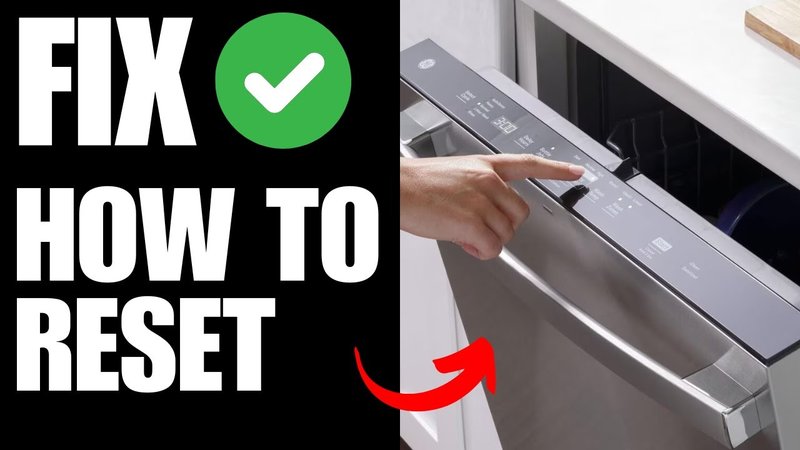
Here’s the deal: the F1 error code generally indicates a problem with the water supply or drainage. Think of your dishwasher as a mini ecosystem – it needs water to operate properly, just like a plant needs water to thrive. When something goes awry with the water coming in or going out, the system alerts you that it needs a little help. The good news is, you don’t necessarily need a toolbox or a degree in engineering to fix it. In fact, with a little guidance, you can often get your dishwasher back in working order in no time.
By the end of this article, you’ll know exactly what steps to take to reset your GE dishwasher after you’ve encountered the F1 error code. So, grab a cup of coffee, settle in, and let’s get your dishwasher running smoothly again.
Understanding the F1 Error Code
Before diving into how to reset your GE dishwasher, it’s crucial to understand what the F1 error code truly means. At its core, the F1 error code is a signal that something is amiss with the water supply system. Picture this: your dishwasher relies on a delicate balance of water intake and drainage to ensure everything gets sparkling clean. When this balance is disrupted, the F1 error code pops up to alert you.
Now, you might be wondering what could cause this disruption. Common culprits include a kinked or blocked water inlet hose, a faulty water tap, or even a clogged filter. Imagine trying to drink through a straw that’s been bent or blocked – not much liquid gets through, right? The same concept applies here. Your dishwasher is trying to say, “Hey, I can’t get enough water to do my job properly!” Understanding these potential causes can guide you toward the right solution.
Once you have a handle on what might be causing the F1 error, the next step is to address these issues one by one. So, let’s explore how to reset your dishwasher effectively once you’ve investigated these possibilities.
Step-by-Step Guide to Resetting Your Dishwasher
Resetting your GE dishwasher isn’t as intimidating as it sounds. Think of it as giving your device a little refresh, much like rebooting your computer when it starts acting up. Here’s a step-by-step guide to help you through the process.
First, ensure your dishwasher is turned off. This is your starting point before making any changes. Unplug the appliance or switch off the circuit breaker that powers it; this ensures safety while you work on it. Just like when you disconnect your computer to fix an issue, powering down the dishwasher can sometimes clear minor glitches responsible for the error.
Next, inspect the water supply. Check for any kinked hoses or blockages. Straighten out any bends in the hoses to ensure smooth water flow. Remember the straw analogy? Ensuring a clear path for the water is crucial. Additionally, make sure the water tap is fully open and functioning. Sometimes, simply turning it off and on again can do the trick.
Finally, power your dishwasher back on. Reconnect it to the power source or flip the circuit breaker back. Test if the F1 error code has cleared by running a simple rinse cycle. If everything works as expected, congratulations! You’ve successfully reset your dishwasher. If the issue persists, it might be time to consult the user manual or consider reaching out to a professional for further assistance.
Preventative Measures and Additional Tips
Now that you’ve tackled the F1 error code, let’s talk about ways to prevent it from popping up again. Regular maintenance is key to keeping your dishwasher running smoothly, much like how regular oil changes keep a car in top condition. Routinely checking and cleaning the filter can prevent blockages, allowing water to flow freely through the system.
Another tip is to periodically inspect the water inlet hose for signs of wear or damage. Early detection of a potential issue is like spotting a leak before it turns into a flood. Replacing worn-out components can save you from bigger headaches down the road.
Lastly, consider running a dishwasher cleaning cycle every few months. This cycle can help clear any mineral deposits or build-up that might impede water flow. Think of it like a spa day for your appliance – a little pampering goes a long way in maintaining its efficiency. By incorporating these simple habits into your routine, you can minimize the chances of encountering the F1 error code in the future.
In conclusion, resetting your GE dishwasher after an F1 error might seem daunting at first, but with a little patience and know-how, it’s entirely manageable. Remember, understanding the root cause is half the battle. With this knowledge, you’re well-equipped to address the issue and keep your dishwasher in top working order.